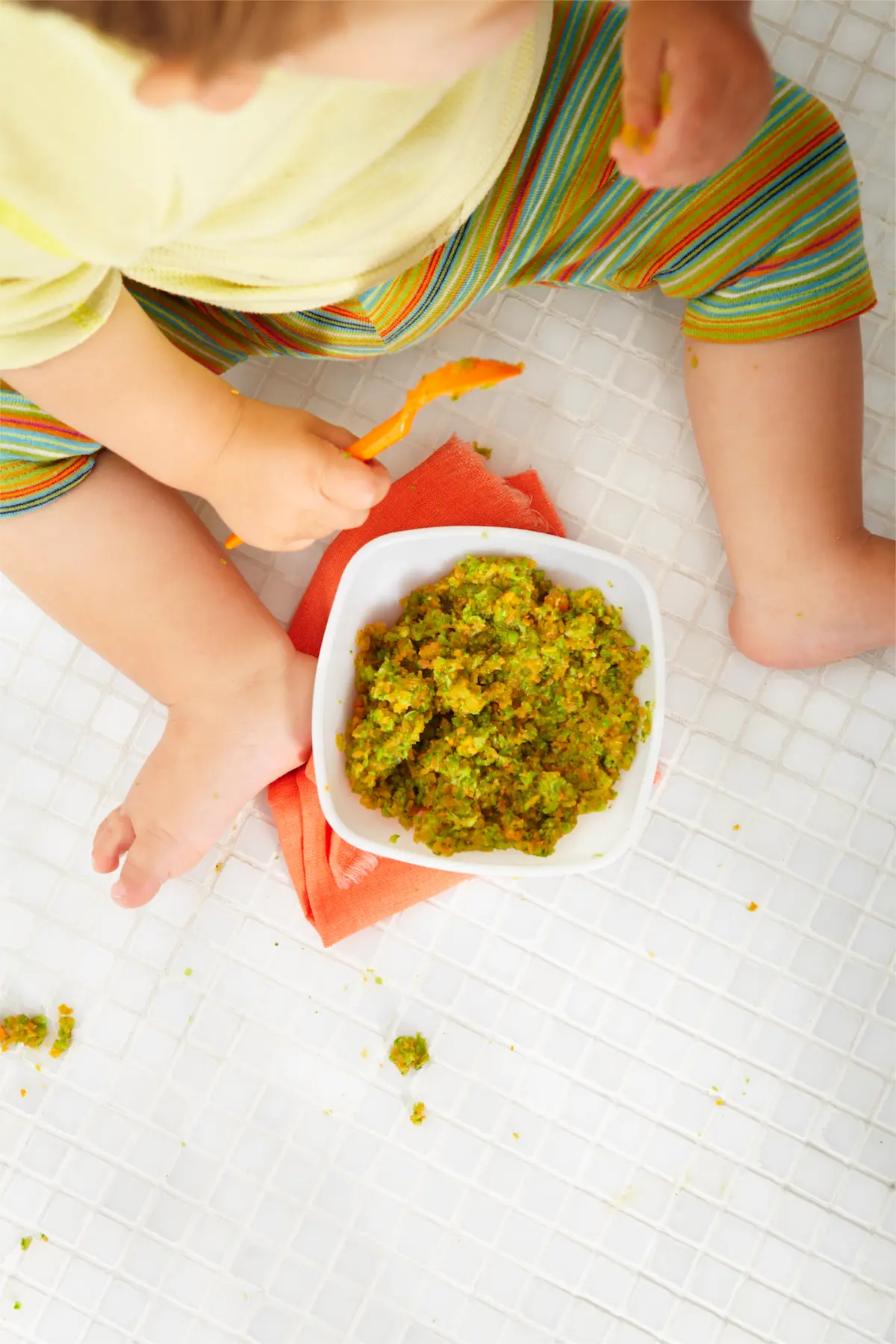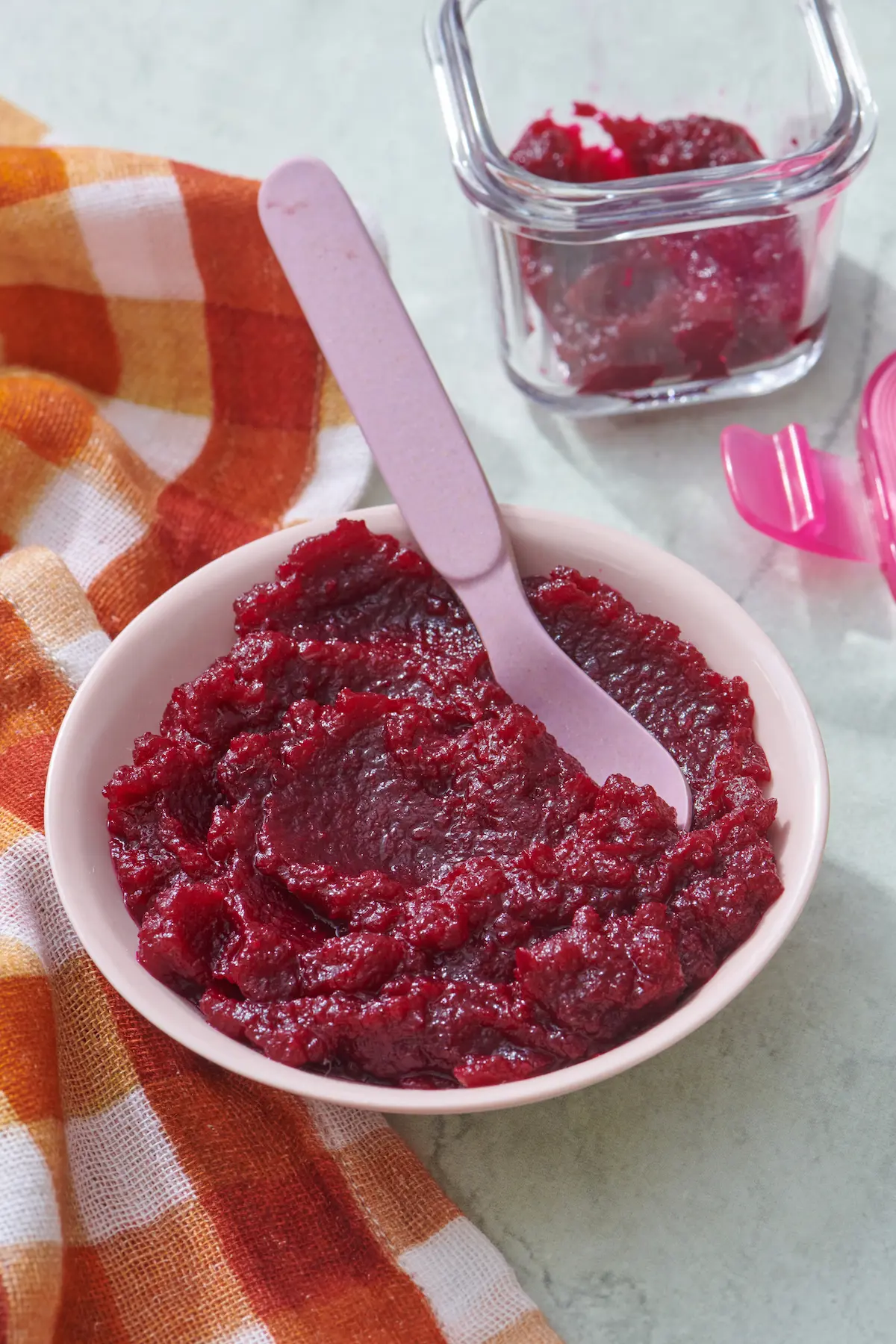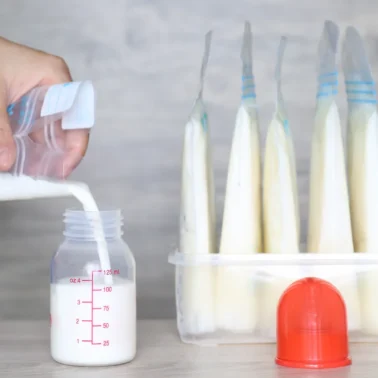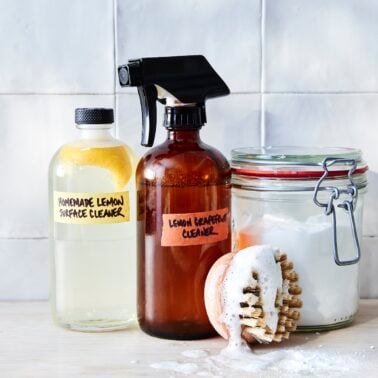This post may contain affiliate links. Please read our disclosure policy.
It’s been my mission since day one on Weelicious to share all my tips and tricks for ways to whip up healthy and delicious meals for your little ones. Making homemade baby food is a great way to know exactly what is going into your child’s belly while also ensuring that they get all the nutrients they need. One of the best tricks you can learn early on in the journey of eating solids is how to properly store, freeze and defrost the homemade baby food you make. Keep reading for all my tips for storing and thawing baby food at home!

Table of Contents
How Should You Store Homemade Baby Food?
Before we get into how to properly thaw, let’s get into how to store that delicious homemade baby food for your little one:
- Ice Cube Trays: After you’ve got a batch of baby food ready to go, spoon the puree into a clean ice cube tray, cover with plastic wrap and freeze. Ice cube trays conveniently portion 1-ounce servings for your baby. You can thaw individual flavors, or combine to make delicious baby food combinations.
- Freezer Bags: Once the baby food cubes are frozen solid, transfer into a labeled freezer bag for easier storage. You can also freeze directly in freezer bags if you need to, just make sure you get out all the air to prevent freezer burn.
- Silicone Freezer Trays: If you want to freeze larger portions, these silicone freezer trays are perfect for that.
- Airtight Glass Container: There are several options online for glass containers for storing baby food. I prefer these glass containers that are freezer, dishwasher and microwave safe.

Best Baby Foods for Freezing
The good news is most baby food purees freeze wonderfully and keep their texture and consistency after being frozen and thawed. Here are some ideas:
- Pureed Fruits
- Pureed fruits like blueberries, peaches, and other berries.
- Some fruits, such as bananas, apples, strawberries, and avocados, tend to brown when frozen, but they’re totally fine to eat.
- Pureed Vegetables
- Pureed veggies such as broccoli, cauliflower, carrots, green beans, peas, sweet potato, and squashes like pumpkin or butternut squash are great!
- Pureed Proteins
- Cooked and pureed meats like chicken, beef, turkey or fish are good to freeze too.
How Long Can You Freeze Homemade Baby Food?
While homemade baby food can “technically” be stored in the freezer indefinitely, it’s best to use it within a certain timeframe to ensure optimal quality. Generally, homemade baby food can be safely stored in the freezer for up to three months. Be sure to label each container with the date it was made to keep track of its freshness.

How Should You Defrost/Reheat Homemade Baby Food?
Now that you know how to freeze baby food properly, let’s get into how to thaw frozen baby food and reheat it safely:
Refrigerator Thawing:
I prefer to thaw frozen baby food in the refrigerator overnight. When ready to serve just heat up on the stove or the microwave.
Thawing in Cold Water:
You can speed up the thawing process by running the container of frozen puree under cold water.
Thawing Baby Foods in the Microwave:
If you’re on a time crunch, you can thaw frozen baby food cubes in the microwave on the defrost setting. Ensure you’re heating them in a microwave safe dish, and give them a little taste to make sure they’re the perfect temperature before serving.

Frequently Asked Question
It’s generally not recommended to refreeze thawed baby food. It’s best to thaw only what you need for a single feeding to avoid waste. If you have some puree leftover, you can store it in the refrigerator for up to two days before you’ll need to toss it out.
It’s best to always inspect homemade baby food before serving it to your little one. Look for any signs of unnatural discoloration, unusual odors, or mold. If in doubt, it’s best to err on the side of caution and discard the food.
While it’s okay to introduce mild herbs and spices to your baby’s diet, it’s essential to do so gradually and in moderation. Avoid adding salt, sugar, or strong spices that may be too harsh for your baby’s delicate palate.

Additional Tips for Storing and Thawing Baby Food
- Properly Label Your Baby Food: Don’t forget to label your homemade baby food containers with the date and contents. This makes it easier to keep track of what’s in your freezer and ensures you’re using up the oldest batches first.
- Consider Portion Sizes: When freezing baby food, consider portion sizes that are appropriate for your little one’s age and appetite. Smaller portions are easier to thaw, first of all and also reduce the risk of waste.
- Use High-Quality Freezer Bags: If choosing to freeze in freezer bags, invest in high-quality freezer bags that are durable and leak-proof. This helps prevent freezer burn and keeps your homemade baby food fresh for longer periods. There are even reusable ones you could get to cut down on waste.
- Rotate Your Stock: To ensure you’re always serving up the freshest baby food possible, make it a habit to rotate your stock regularly. Use older batches first and replenish your stash with fresh batches as needed.
Now you’ve got all the tools you need to store, freeze and thaw all that wonderful, nutritious baby food you’ve got ready for your child. If you have any questions, leave them in the comments below!




